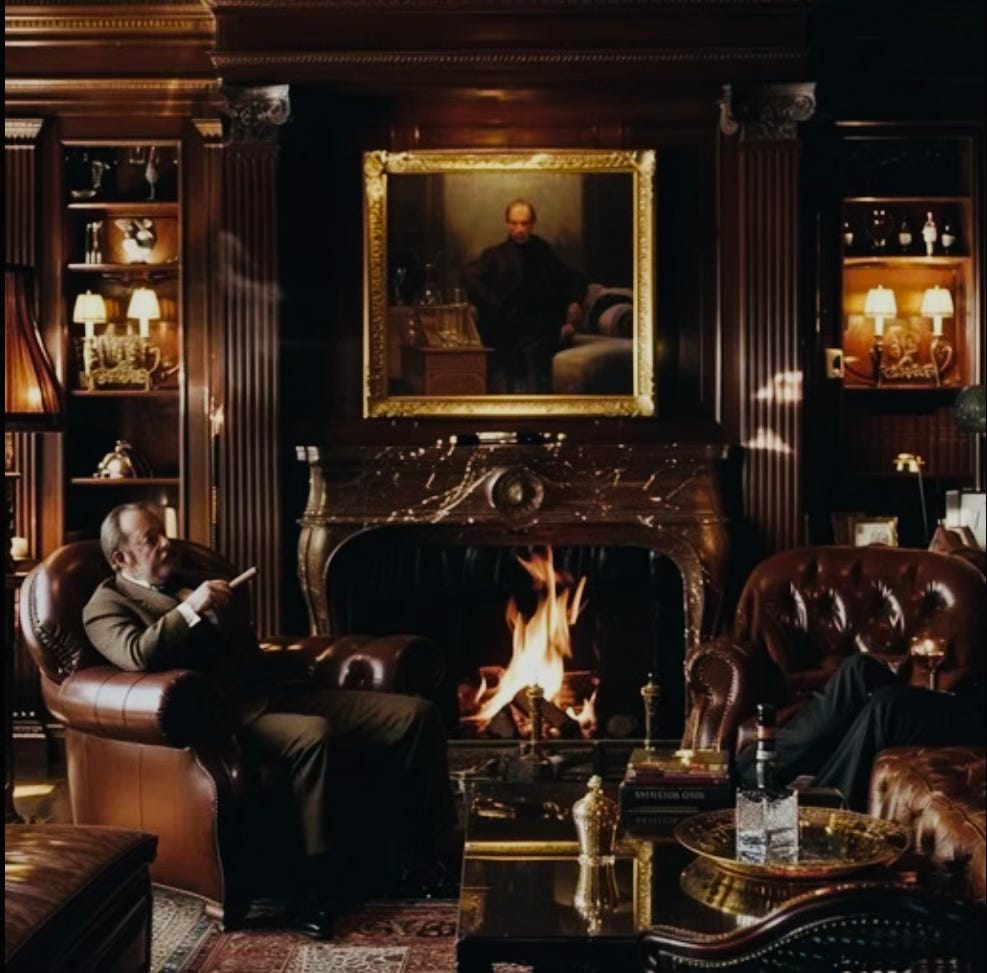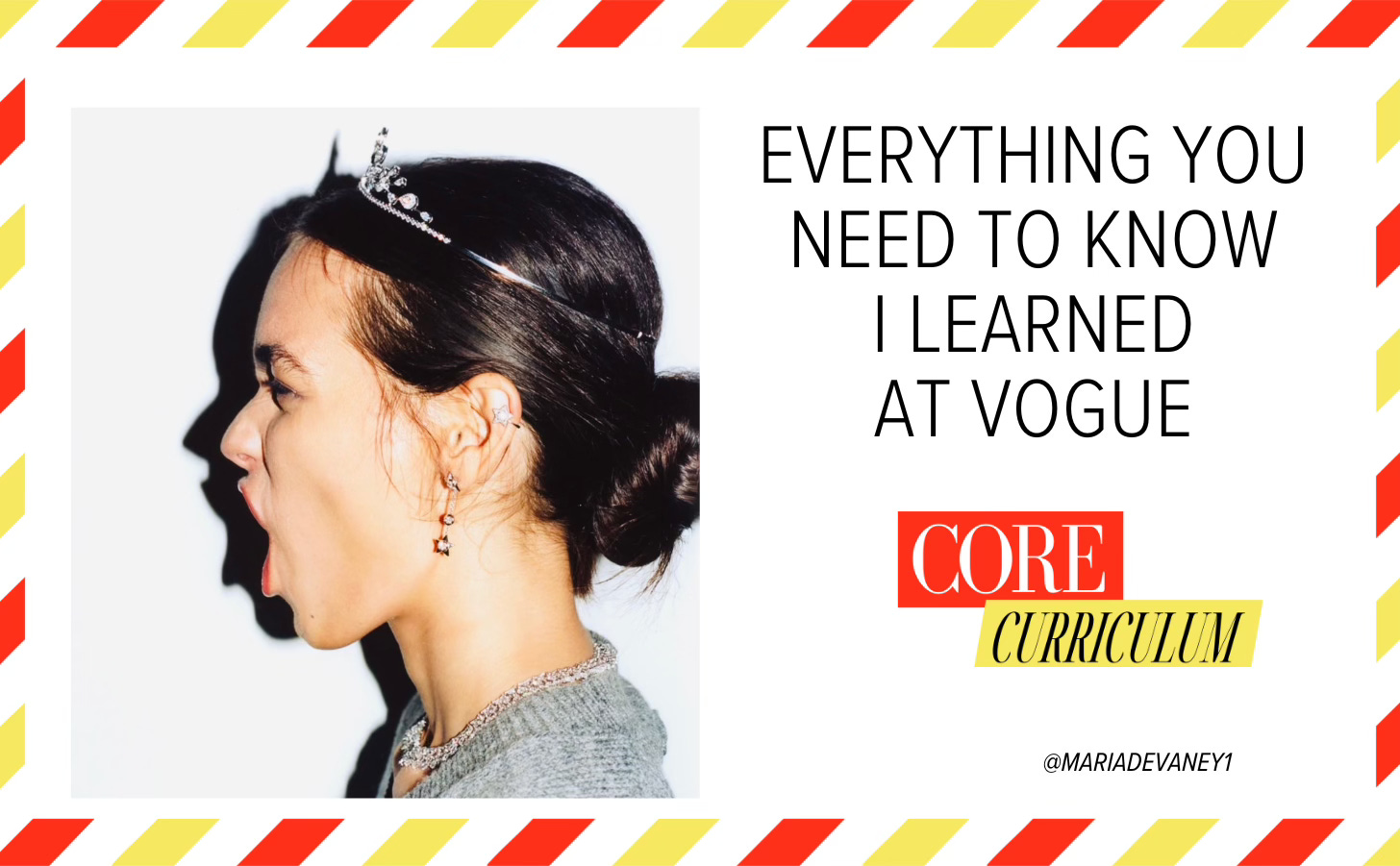Meet Vogue's Voice Coach: Mr. How Now Brown Cow
Core Curriculum: Everything You Need to Know I Learned at Vogue.

Vogue had a professional voice coach on retainer for its “outward facing” staffers.
Oh yes they did.
And since my position as Merchandising Editor was (often terrifyingly) as “outward facing” as it got, I was trained by him for three months upon my arrival at the magazine.
Vogue’s voice coach was a retired British actor who worked out of his apartment in lower Manhattan. His home was filled to the brim with art, antiques, shabby chic sofas, and lots and lots of books. During the colder months, he and I often enjoyed afternoon tea by the fire before getting to the work of improving me- which would take up the rest of our one-hour together.
In retrospect, I think “tea time” was my instructor’s attempt to unwind my emotional state of mind. By these late afternoon visits I had already spent hours surviving inside Vogue, and it was difficult for me to go from battle-ready to “ready-for-my-cue”. My instructor believed the key to speaking well in any setting is to be relaxed, and I always arrived for these appointments feeling anything but.
Those of us who were hired to speak to the press on Vogue’s behalf worked with this voice coach, as did select staffers in whom Vogue discerned any kind of unpleasant accent. Outside of Vogue, our coach’s other clients included an impressive roster of corporate figureheads- to include at the time the CEO of IBM. They hired him to prep them for upcoming speeches, and important press conferences.
Vogue’s voice coach had all of his subjects repeat, “how now brown cow” over-and-over again as a warm-up exercise at the beginning of each session. He showed us how to pronounce it in an exaggerated fashion, and taught us to enunciate every syllable in such an over-the-top fashion that it resulted in mouth contortions.
This completely lovely man swore that mastering the proper elocution of this particular phrase was key.
Back at Vogue, we referred to him as Mr. How-Now-Brown-Cow, and only those of us who were sent to work with him were in on the joke. Having spent his career on the London stage, he felt strongly that one could only speak well if one’s lungs were properly filled with air. So we practiced breathing in and out, a lot. We practiced when to breathe, which was during the few seconds just before we spoke. We practiced when to exhale, which was gradually, and as we spoke.
Mr. How-Now-Brown-Cow tried to impart to his voice students a physicality of which actors are keenly aware, but the rest of us are likely not.
He also believed in filming his subjects as they spoke, and there was a lot of post-game analysis. He pointed out any fidgeting, shifting, movement, or anything else caught on camera that might visually distract the person to whom one was speaking. Mr. How-Now-Brown-Cow saw self-conscious gestures as an assault on this concept of seamlessness- whether one was speaking to an individual, or to a group.
In other words, if people are too distracted by watching you shift side-to-side in your seat while speaking, they will have a hard time remembering after the fact what you actually said.
There was a lot of visualization in the mind’s eye, with a focus on the power of positive thinking- since success is a self-fulfilling concept.
And his strategy was to unleash in his students the power to command any room.
Upon entering it, he instructed us to mentally feed off the excitement and enthusiasm that the people- to whom we were about to speak- physically felt. Simply by having us in their presence.
For me, it was a brand new way of thinking. And we understate.
As I wrestled to find my Vogue footing against this marquee concept, Mr. How-Now-Brown-Cow assured me that the CEO of IBM struggled with it too.
Lesson One:
Everyone is a work in progress as they communicate ongoing with the world. Apparently, in that moment, even the CEO of IBM.
Work hard to sound your best in conversation with anyone and everyone. And try to edit out any distracting habits, because each of us has at least a few.
Lesson Two:
Even though you are not yet the CEO of IBM, or from someplace as glamorous as Vogue- people are still likely excited to hear what you have to say.
Relax enough to be yourself when speaking with people whom you have just met (this takes practice!).
And do your best to channel the enthusiasm and excitement of being there- that Mr. How-Now-Brown-Cow felt so strongly about.
Maria Devaney graduated from Georgetown University in the 1990s, and would like to thank fellow alum Condé Montrose Nast who graduated in the 1890s from the same institution. Maria would also like to thank Franny Nast, Condé’s aunt, for funding his college education when his parents could not. Condé went on to become President of Georgetown’s student body, the same position for which (former U.S. President) Bill Clinton campaigned in the late 1960s- and lost.
After Georgetown, Condé worked for a college classmate’s father in magazine publishing, then broke off on his own in 1909 to acquire an obscure society publication called Vogue. Condé Nast, the man, went on to build it into the media empire we know today.
“Everything You Need to Know I Learned at Vogue” began as a private letter to Maria’s (then small) daughter Margaux, and evolved into a four-year, on-campus workshop for students of The Georgetown Scholars Program (GSP) at Georgetown University in Washington, DC.



